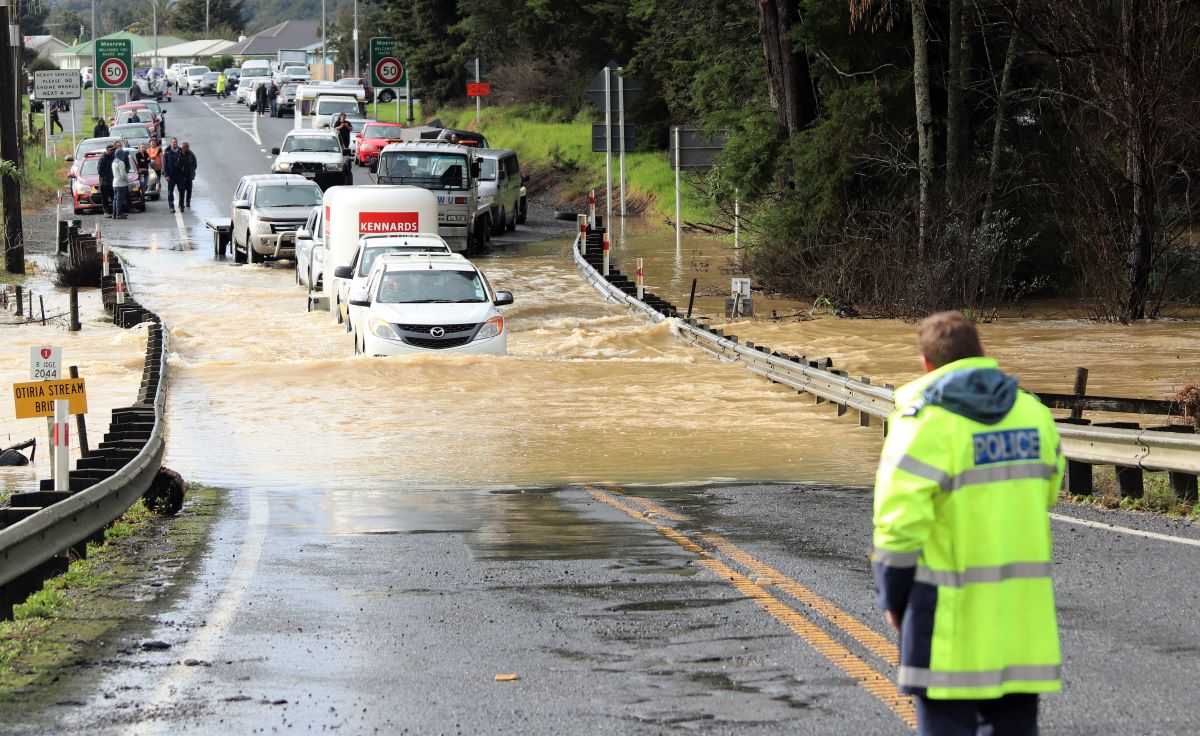Overflow works will reduce flooding at notorious bottleneck
10 May 2021, 7:43 AM
Work is virtually complete on $850,000 of mitigation repairs its architects say should significantly reduce flooding at a notorious bottleneck around the bridge at the bottom of Moerewa’s Turntable Hill.
Justin Blaikie, who chairs the Taumarere Flood Management Working Group, says the work should drastically reduce flooding which sometimes swamps – and can close – a small but critical section of State Highway 1 at the bottom of Turntable Hill.
Councillor Blaikie – who represents the regional council’s Hokianga-Kaikohe constituency – says the project has been 100% funded by Waka Kotahi (NZ Transport Agency) because of the benefits accrued by keeping the crucial bridge and its state highway approaches open.
“While only small, the roughly 100-metre long section of State Highway 1 that forms the approach to this bridge is a critical piece of Northland’s roading infrastructure and a vital link to areas north of Moerewa.”
The flood works began in earnest in January and have seen almost one kilometre of stream banks lining the Otiria Stream ‘benched’ to create large, controlled overflow areas for floodwaters.
While the work won’t prevent all flooding at the bridge, Cr Blaikie says it should mean road closures due to flooding should be appreciably fewer and farther between.
“Prior to the works the area had a design level of just one year in two, meaning that the area would flood at least once every two years.”
“Obviously the amount of rain that actually falls in any given year can vary tremendously and no one has any control over that, but in theory, the area should now cope with the sort of rainfall you’d normally expect to occur only once in a decade.”
Councillor Blaikie says the project is a great example of collaboration between local and central government to resolve a problem in a cost-effective way.
“I understand it’s also virtually a first for Te Waka Kotahi in that they have funded works not associated with actual roading infrastructure like bridges etcetera.”
Councillor Blaikie also paid tribute to Ngati Hine kaitiaki Wiremu Keretene who had watched over the project and to lead contractors Far North Roading Group which he said had faced a challenging environment due to the hard and very rocky ground.
That was evidenced by the large piles of many tonnes of rocks that had accumulated at the site as works progressed.
“The rocks came from three lava spurs that pinched the river, like fingers.” “The top layers were relatively soft rock, easy to remove with a digger, but the rock got much harder the deeper into the lava flow, probably due to the slow cooling deep in the lava versus relatively quick cooling at the surface.”
While some of the rock has been used to armour the approaches to the bridge and line some critical stretches of stream bank, an estimated 3000 cubic metres of surplus rock would be earmarked for other future flood mitigation work.
Contractors were last week carrying out finishing touches including expecting to hydroseed the worked area.

A file shot of flooding at Moerewa’s Turntable Hill from July last year…$850,000 of recent flood works should hopefully make scenes like this far less common in future.
